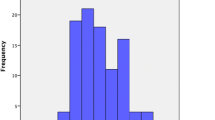Abstract
Background
Clubfoot is disabling, with an incidence of 0.9/1,000 live births to 7/1,000 live births. It affects mobility, productivity, and quality of life. Patients are treated surgically or non-surgically using the Ponseti method. We estimated the cost per patient treated with both methods and the cost-effectiveness of these methods in Pakistan.
Methods
Parents of patients treated, either surgically or with the Ponseti method, at the Indus Hospital’s free program for clubfoot were interviewed between February and May 2012. We measured the direct and indirect household expenditures for pre-diagnosis, incomplete treatment, and current treatment until the first brace for Ponseti method and the first corrective surgery for surgically treated patients. Hospital expenditure was measured by existing accounts.
Results
Average per-patient cost was $349 for the Ponseti method and $810 for patients treated surgically. Of these, the Indus hospital costs were $170 the for Ponseti method and $452 for surgically treated patients. The direct household expenditure was $154 and $314 for the Ponseti and surgical methods, respectively. The majority of the costs were incurred pre-diagnosis and after inadequate treatment, with the largest proportion spent on transportation, material, and fee for service. The Ponseti method is shown to be the dominant method of treatment, with an incremental cost-effectiveness ratio of $1,225.
Conclusions
The Ponseti method is clearly the treatment of choice in resource-constrained settings like Pakistan. Household costs for clubfoot treatment are substantial, even in programs offering free diagnostics and treatments and may be a barrier to service utilization for the poorest patients.
Similar content being viewed by others
References
Beals RK (1978) Club foot in the Maori: a genetic study of 50 kindreds. N Z Med J 88:144–146
Mittal RL, Sekhon AS, Singh G et al (1993) The prevalence of congenital orthopaedic anomalies in a rural community. Int Orthop 17:11–12
Shiels WE 2nd, Coley BD, Kean J et al (2007) Focused dynamic sonographic examination of the congenital clubfoot. Pediatr Radiol 37:1118–1124
WHO (2011) World report on disability. World Health Organization, Malta
Khan SA, Kumar A (2010) Ponseti’s manipulation in neglected clubfoot in children more than 7 years of age: a prospective evaluation of 25 feet with long-term follow-up. J Pediatr Orthop B 19:385–389
Ponseti IV (1992) Treatment of congenital club foot. J Bone Joint Surg 74:448–454
Ponseti IV (1998) Correction of the talar neck angle in congenital clubfoot with sequential manipulation and casting. Iowa Orthop J 18:74–75
Cosma D, Vasilescu D, Valeanu M (2007) Comparative results of the conservative treatment in clubfoot by two different protocols. J Pediatr Orthop B 16:317–321
Cooper DM, Dietz FR (1995) Treatment of idiopathic clubfoot. A 30-year follow-up note. J Bone Joint Surg 77:1477–1489
Jowett CR, Morcuende JA, Ramachandran M (2011) Management of congenital talipes equinovarus using the Ponseti method: a systematic review. J Bone Joint Surg 93:1160–1164
Gray K, Pacey V, Gibbons P et al (2012) Interventions for congenital talipes equinovarus (clubfoot). Cochrane Database Syst Rev 4:CD008602
Morcuende JA, Egbert M, Ponseti IV (2003) The effect of the internet in the treatment of congenital idiopathic clubfoot. Iowa Orthop J 23:83–86
Staheli L, Morcuende JA, Pirani S, et al (2009) Clubfoot: Ponseti management. Global Help http://www.global-help.org/. Accessed 3 Dec 2013
Herzenberg JE, Radler C, Bor N (2002) Ponseti versus traditional methods of casting for idiopathic clubfoot. J Pediatr Orthop 22:517–521
Radler C (2013) The Ponseti method for the treatment of congenital club foot: review of the current literature and treatment recommendations. Int Orthop 37:1747–1753
van Gelder JH, van Ruiten AG, Visser JD et al (2010) Long-term results of the posteromedial release in the treatment of idiopathic clubfoot. J Pediatr Orthop 30:700–704
Graf A, Hassani S, Krzak J et al (2010) Long-term outcome evaluation in young adults following clubfoot surgical release. J Pediatr Orthop 30:379–385
Halanski MA, Huang JC, Walsh SJ et al (2009) Resource utilization in clubfoot management. Clin Orthop Relat Res 467:1171–1179
Dobbs MB, Nunley R, Schoenecker PL (2006) Long-term follow-up of patients with clubfeet treated with extensive soft-tissue release. J Bone Joint Surg 88:986–996
Richards BS, Faulks S, Rathjen KE et al (2008) A comparison of two nonoperative methods of idiopathic clubfoot correction: the Ponseti method and the French functional (physiotherapy) method. J Bone Joint Surg 90:2313–2321
Ferreira LF, Nogueira MP, Pereira JC et al (2011) Comparison of hospital costs and duration of treatment with two different clubfoot protocols. Iowa Orthop J 31:49–51
Haft GF, Walker CG, Crawford HA (2007) Early clubfoot recurrence after use of the Ponseti method in a New Zealand population. J Bone Joint Surg 89:487–493
Lu N, Zhao L, Du Q et al (2010) From cutting to casting: impact and initial barriers to the Ponseti method of clubfoot treatment in China. Iowa Orthop J 30:1–6
Pirani S, Naddumba E, Mathias R et al (2009) Towards effective Ponseti clubfoot care: the uganda sustainable clubfoot care project. Clin Orthop Relat Res 467:1154–1163
Ippolito E, Farsetti P, Caterini R et al (2003) Long-term comparative results in patients with congenital clubfoot treated with two different protocols. J Bone Joint Surg 85-A:1286–1294
Verma A, Mehtani A, Sural S et al (2012) Management of idiopathic clubfoot in toddlers by Ponseti’s method. J Pediatr Orthop B 21:79–84
Burfat A, Mohammed S, Siddiqi O et al (2013) Understanding the knowledge and perceptions about clubfoot in Karachi, Pakistan: a qualitative exploration. Iowa Orthop 33:149–152
Acknowledgments
The authors are grateful to the Finance Department of Indus Hospital for their contribution in articulating the expenditure incurred during treatment of patients enrolled in the study. This work was supported by the Amer Haider Charitable Foundation.
Conflict of interest
None.
Author information
Authors and Affiliations
Corresponding author
Rights and permissions
About this article
Cite this article
Hussain, H., Burfat, A.M., Samad, L. et al. Cost-Effectiveness of the Ponseti Method for Treatment of Clubfoot in Pakistan. World J Surg 38, 2217–2222 (2014). https://doi.org/10.1007/s00268-014-2530-2
Published:
Issue Date:
DOI: https://doi.org/10.1007/s00268-014-2530-2




